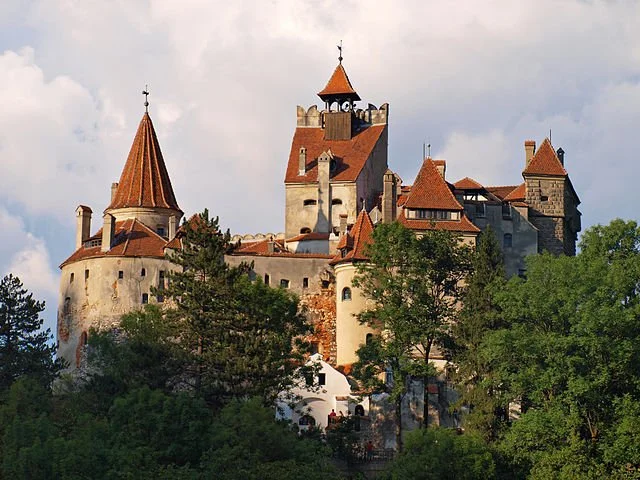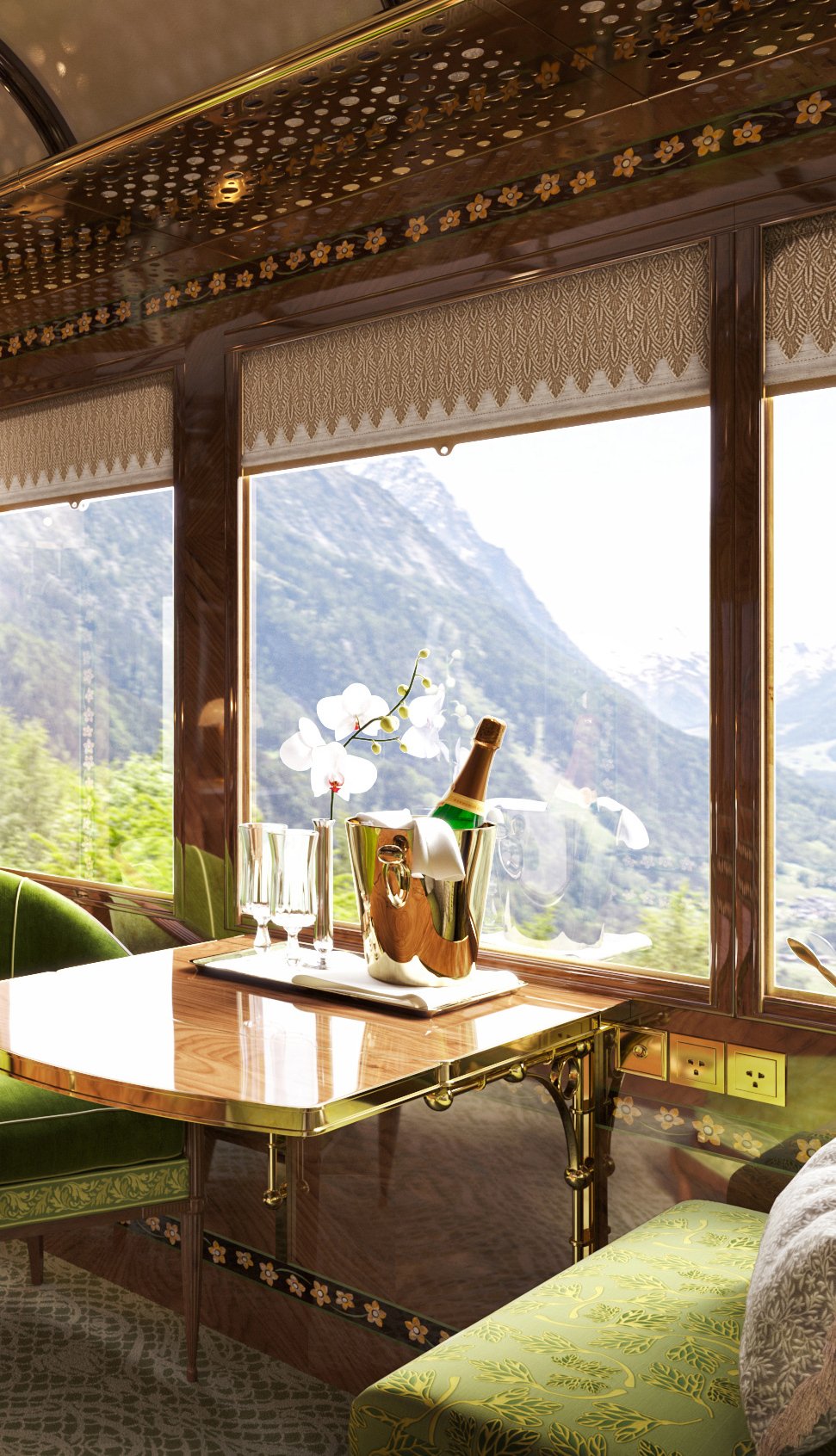From castles to Hobbit Holes, from train rides to long walks: here are four of the most famous sites and journeys from literature that readers can experience for themselves.
Admont Abbey Library in Austria. Jorge Royan. CC BY 3.0.
From twisting plots to lyrical prose, from memorable characters and everlasting themes, books have a way of immersing us and making us feel as if we’re in a completely different world or even universe. But what if we could actually go to the places we read about? Finding reality in fiction, this list highlights four of the best trips from literature that people can take to to experience the story themselves.
1. Retrace Mrs. Dalloway’s steps across London
Dean’s Yard in Westminster Abbey. Ed g2s. CC BY 3.0.
“What a lark! What a plunge!” Such are Clarissa Dalloway’s thoughts as she sets out for the streets of London to fetch flowers. Indeed, Virginia Woolf’s 1925 novel “Mrs. Dalloway” captures the city at a titillating turning point, when forces of industrialization and imperialism were clashing with traditional notions of gender and class. The world stood with bated breath at this cultural crossroads, especially those of high society like titular Mrs. Dalloway. But even without her dinner parties, post-war politics and tortured lovers (both past and present), modern readers can still follow in Mrs. Dalloway’s footsteps by walking across Westminster. This verified tour through “Mrs. Dalloway’s London” takes visitors down Bond Street and into Regent’s Park, passing sites such as Westminster Abbey and Queen Anne’s Gate — all as the Big Ben tolls regularly in the distance. But counting down the hours doesn’t have to be as morbid or existential as Woolf’s characters make it out to be, especially when the walk of life is this scenic. As Mrs. Dalloway herself says, “I love walking in London.”
2. Visit Dracula’s old haunts in Romania
Bran Castle. Todor Bozhinov. CC BY 4.0.
When Jonathan Harker first visits Count Dracula in Transylvania, he describes the Count’s estate as “a vast ruinous castle, from whose tall black windows came no ray of light, and whose broken battlements showed a jagged line across the moonlit sky.” Castle Dracula sets the eerie, Gothic stage for the rest of Bram Stoker’s 1897 vampire novel “Dracula/” Travelers can experience this moodiness for themselves at Bran Castle in Romania. Although Transylvania, a historical and cultural region in central Romania, contains many possible sites for Castle Dracula — including the Poenari Citadel and Corvin Castle — Bran Castle is widely advertised as “Dracula’s castle,” despite having no strong connection to Dracula’s real-life namesake Vlad Dracul, the Impaler. Regardless, visitors can tour the castle’s medieval halls, dine at its tea house and view Transylvania’s rolling countryside from its towers and turrets. Even after the story carries Harker and the Crew of Light away from the estate and into the likes of Galatz and the Borgo Pass — and Dracula himself is defeated — “the castle stood as before, reared high above a waste of desolation.” Perhaps Bran Castle is proof of that.
3. Journey there and back again through Hobbiton in New Zealand
Hobbiton. Maksym Kozlenko. CC BY 4.0.
The misty mountains and glittering caves of J.R.R. Tolkien’s fantasy epic “The Lord of the Rings” may be fictional, but New Zealand is as close as it gets. At least, that’s what director Peter Jackson thought when he chose the town of Matamata to represent the Shire in his film adaptations of Tolkien’s legend. Originally a 1250-acre beef and sheep farm, the “Hobbiton” movie set has been open to fans since 2002. Featuring many squat, circular Hobbit Hole doors built right into Matamata’s rolling hills, the idyllic and pastoral Hobbiton fully captures the “peace and plenty” of the Shire that Tolkien describes in his pages. Visitors can spend their day in Middle-earth exploring the interior of different Hobbit Holes on Bagshot Row, including Bag End, which Frodo and Bilbo Baggins call home. After crossing the double-arch bridge, visitors can dine at the Green Dragon Inn for a drink or even a second breakfast. For a more technical experience, visitors can also go on a behind-the-scenes tour to learn more about the props and sets of Jackson’s movies. For both casual fans and die-hard “Ringers,” Hobbiton offers an immersive, enriching experience. As Tolkien himself described the Shire, what a “pleasant corner of the world.”
4. Ride the Orient Express from Istanbul to Paris (murder mystery not included)
Venice Simplon-Orient–Express. Luxury Train Club. CC BY 2.0.
“The murderer is with us — on the train now.” Detective Hercule Poirot always has a flair for the dramatic, but sometimes, the situation demands it. With a snowstorm, a dead body and a dizzying web of European nationals all in play, there could be no better setting for the sly mystery of Samuel Ratchett’s murder than the stylish Orient Express. As featured in Agatha Christie’s 1934 novel “Murder on the Orient Express,” the Orient Express was a luxe rail train that traveled from Istanbul to Paris in 80 hours — a great reduction compared to the previous journey time of two and a half months. Although the railway ceased operations in 1977, the website for Pera Palace — the Turkish hotel where Christie wrote most of the novel — reports that “since 2009, Orient Express line has been continued by organizing a symbolic flight every September.” Now, visitors can make the same Istanbul-Paris connection as Christie’s eccentric cast onboard the Venice Simplon-Orient-Express. The train’s website outlines a six-day trip through Istanbul, Bucharest, Budapest and Paris, with a stop at the Peles Castle and a cruise down the Danube River also on the itinerary. Visitors are also encouraged to dress up in their best Jazz Age attire, lest they commit a crime of their own: being underdressed.
Literature lets us experience the world in ways we normally wouldn’t be able to, both entertaining and educating us. Through stories, we can live alternate lives, but travel reminds us that our wildest dreams — and a multitude of other perspectives — can be found out in the real world, too, not just on our bookshelves.
Isabella Liu
Bella is a student at UC Berkeley studying English, Media Studies and Journalism. When she’s not writing or working through the books on her nightstand, you can find her painting her nails red, taking digicam photos with her friends or yelling at the TV to make the Dodgers play better.






